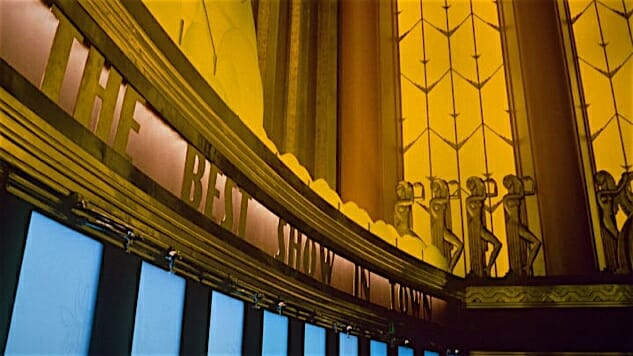Historic Cinemas—The Paramount Theatre

Location: Oakland, CA
Built: 1931
Status: A beleaguered history but currently thriving.
I did a favor for a friend. His thank you note arrived in the form of two second-row seats to see Leonard Cohen at the Paramount. Suffice to say I am open to doing favors for this person any time.
When it was built, the Paramount was the largest multi-purpose theater on the West Coast, seating over 3,400 guests. A true Art Deco movie palace, the Paramount spared no expense in its construction, creating an extraordinarily opulent space—gilded, marble-clad, full of expensive, rare materials from the 110-foot tile mosaic exterior to a lobby with a 58-foot ceiling and incredible lighting, to the auditorium’s gold walls and sculpted mythological figures. Custom organ by Wurlitzer, epic splendor throughout—apparently the place opened at a cost of $3 million, and that’s 1931 money. The Paramount is one of the true masterpiece examples of cinema as escape from reality. It really is like walking into another world.
Its success was short-lived: unable to keep up with operating costs, the Paramount closed in 1932. It reopened in 1933 under new management, who got the place out of debt by screening films only-no stage shows, no orchestra … just the best of the current releases.
-

-

-

-

-

-

-

-

-

-

-

-

-

-

-

-

-

-

-

-

-

-

-

-

-

-

-

-

-

-

-

-

-

-

-

-

-

-

-

-








































